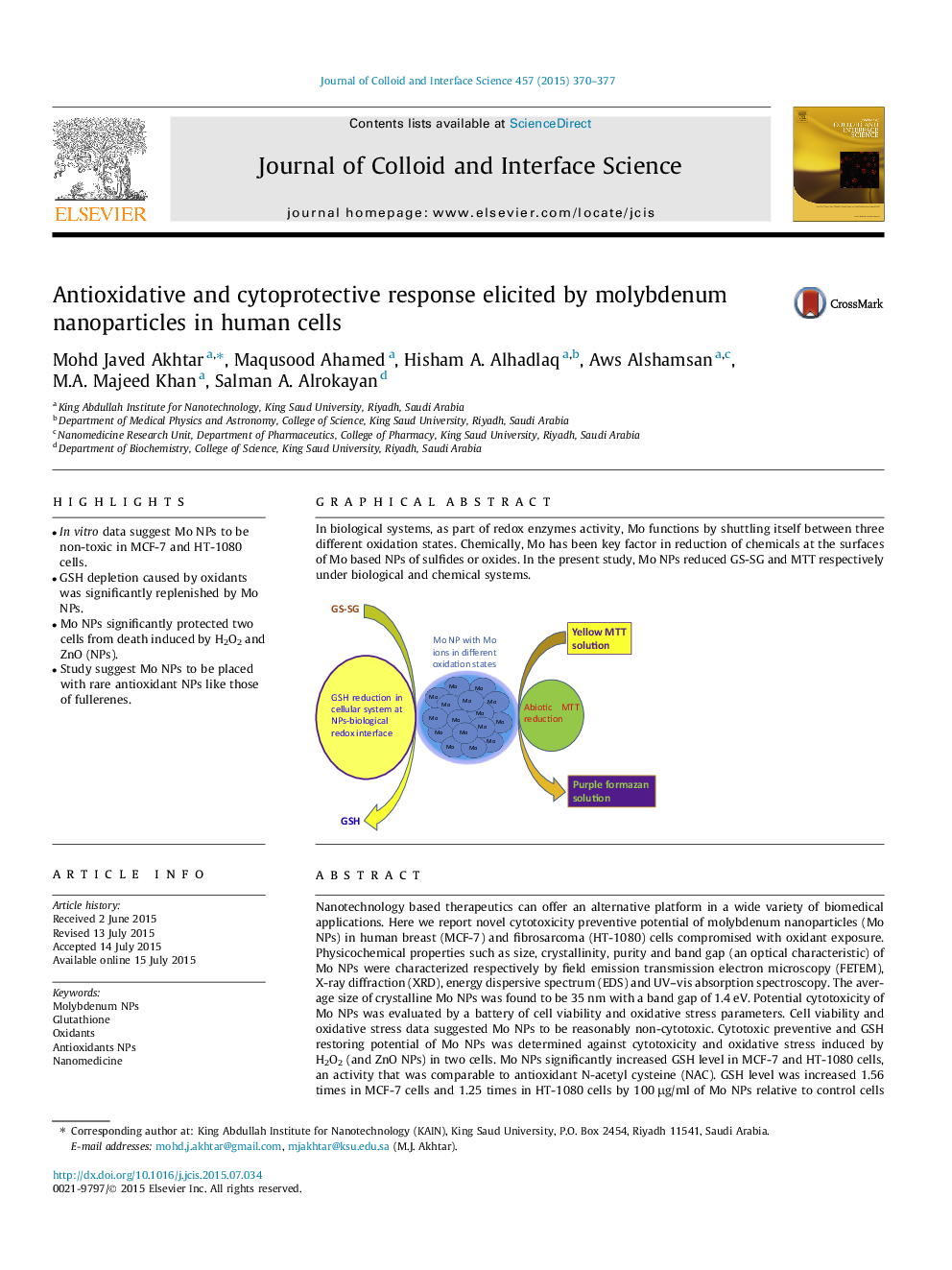| کد مقاله | کد نشریه | سال انتشار | مقاله انگلیسی | نسخه تمام متن |
|---|---|---|---|---|
| 606676 | 1454538 | 2015 | 8 صفحه PDF | دانلود رایگان |
• In vitro data suggest Mo NPs to be non-toxic in MCF-7 and HT-1080 cells.
• GSH depletion caused by oxidants was significantly replenished by Mo NPs.
• Mo NPs significantly protected two cells from death induced by H2O2 and ZnO (NPs).
• Study suggest Mo NPs to be placed with rare antioxidant NPs like those of fullerenes.
Nanotechnology based therapeutics can offer an alternative platform in a wide variety of biomedical applications. Here we report novel cytotoxicity preventive potential of molybdenum nanoparticles (Mo NPs) in human breast (MCF-7) and fibrosarcoma (HT-1080) cells compromised with oxidant exposure. Physicochemical properties such as size, crystallinity, purity and band gap (an optical characteristic) of Mo NPs were characterized respectively by field emission transmission electron microscopy (FETEM), X-ray diffraction (XRD), energy dispersive spectrum (EDS) and UV–vis absorption spectroscopy. The average size of crystalline Mo NPs was found to be 35 nm with a band gap of 1.4 eV. Potential cytotoxicity of Mo NPs was evaluated by a battery of cell viability and oxidative stress parameters. Cell viability and oxidative stress data suggested Mo NPs to be reasonably non-cytotoxic. Cytotoxic preventive and GSH restoring potential of Mo NPs was determined against cytotoxicity and oxidative stress induced by H2O2 (and ZnO NPs) in two cells. Mo NPs significantly increased GSH level in MCF-7 and HT-1080 cells, an activity that was comparable to antioxidant N-acetyl cysteine (NAC). GSH level was increased 1.56 times in MCF-7 cells and 1.25 times in HT-1080 cells by 100 μg/ml of Mo NPs relative to control cells in 24 h. End-point data clearly suggest that Mo NPs significantly protected cells against cytotoxicity induced by H2O2 and ZnO (NPs) (p < 0.05). Our study warrants further investigation about Mo NPs that could be exploited in myriads of nanotechnology applications.
In biological systems, as part of redox enzymes activity, Mo functions by shuttling itself between three different oxidation states. Chemically, Mo has been key factor in reduction of chemicals at the surfaces of Mo based NPs of sulfides or oxides. In the present study, Mo NPs reduced GS-SG and MTT respectively under biological and chemical systems.Figure optionsDownload high-quality image (153 K)Download as PowerPoint slide
Journal: Journal of Colloid and Interface Science - Volume 457, 1 November 2015, Pages 370–377
